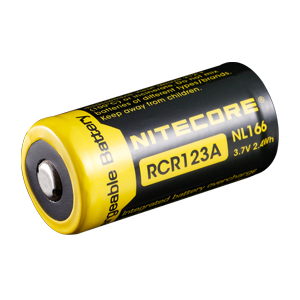Key Takeaways for Built-in or Removable Batteries
- Choosing a light with removable batteries means deciding which batteries you want to use.
- Battery discharge rate is important and you want to pay attention any special requirements.
- There now USB rechargeable Li-ion removeable batteries.
- If you want something familiar, you can go with AA or AAA battery flashlights.
Built-in or Removable Batteries?
Have you ever reached for your flashlight in the middle of a power outage only to find out only the dimmest settings will work? Or even worse, the batteries were dead and left you in the dark? It was at that moment you probably realized your flashlight was only as good as the batteries powering it.
When it comes to battery options for flashlights, there is a range of options that exist which not only determine the overall runtime of your flashlight but also affect the brightness possible. We’re taking on the built-in vs removable batteries debate so you can make an informed decision the next time you’re buying a flashlight.
Removable Batteries vs Built-in Batteries
The first major decision you’ll have to make is whether you want a flashlight that uses removable batteries or one with a built-in battery. There are a couple advantages and disadvantages to each: Removable batteries allow you to swap out drained batteries for a fresh pair. Not only does this increase the lifespan of your flashlight, but it allows you to bring backup batteries for longer trips.
The downside to this set up would be the added hassle of keeping track of loose batteries and maintaining additional sets of batteries. Picking a flashlight with a built-in power supply means you’ll have everything you need to power your light right out of the box. You won’t have to worry about battery compatibility or having to source replacements. Even better, these flashlights have built-in charging which helps keep your gear space to a minimum.
Li-ion Battery Options for LED Flashlights
If you decide to go for a flashlight with removable batteries, you still have a few choices to make. Today many LED flashlights use li-ion batteries to achieve incredibly bright outputs from a rechargeable power supply. If you want an informational video about choosing Li-ion batteries, you can find one here. If not, here’s a break down of the most popular sizes and what you need to know about each:

CR123A/RCR123/16340 Li-ion Batteries
When it comes to mini-size flashlights, you’ll frequently see flashlights that use RCR123 or 16340 size batteries. Both names refer to a rechargeable li-ion battery with a decent capacity (or runtime capability) while maintaining a small, light footprint. You’ll also be able to use CR123A batteries which is the non-rechargeable equivalent in these flashlights. Many people prefer to use CR123A batteries for their cold weather performance.
Pros: Great for everyday carry; minimizes carry weight; ideal for cold weather (CR123A)
Cons: Not ideal for tasks that require very bright outputs or if you'll have infrequent access to a charger
Our favorite RCR123A flashlights: NITECORE P05, NITECORE SRT3

18650 Li-ion Batteries
To achieve some of the highest outputs, you’ll want to look at flashlights that use one, two or four 18650 size batteries. These larger batteries (roughly double the length of a 16340) have a higher capacity and have greater discharge rates to allow for the brightest outputs. Originally designed to be used in laptops, 18650 li-ion batteries have become the go-to power source in the flashlight world for their large capacities and total performance.
Pros: Necessary for ultra bright outputs; offers longer runtimes
Cons: Adds weight, especially if carrying backups; can be difficult to source
Our favorite 18650 flashlights: NITECORE MH12GT (1x 18650), NITECORE SRT9 (2x 18650), NITECORE TM28 (4x 18650)
Battery Discharge Rate Matters
You’ll want to pay attention to any special battery requirements your flashlight might have. For example, to achieve an 1800 lumen output with an 18650 battery, our NITECORE flashlights require an 18650 battery with greater than 8A output like the NL1835HP battery. These batteries have a similar cost to our other 18650 batteries but are optimized for high drain devices. (And you can still use them in flashlights that don’t need the higher discharge rate!)
USB Rechargeable Li-ion Batteries
One of the newest advancements in battery technology is the introduction of built-in micro-USB charging ports on li-ion batteries. These batteries are an excellent compromise if you're looking at a flashlight without built-in charging and want to keep your gear to a minimum.
AA and AAA Alkaline/Ni-MH Batteries
If you’re looking to stick with a battery technology you’re familiar with or just want something that can be found virtually everywhere, there are plenty of high quality flashlights that run on AA or AAA batteries. While not able to produce the same high brightness outputs as their li-ion counterparts, these flashlights tend to be slim and lightweight, and they are popular choices for everyday carry.
Pros: Universally available; lighter weight than 18650 batteries
Cons: Non-rechargeable; lower brightness outputs available
Our favorite AA/AAA flashlights: NITECORE MT20A (2x AA), NITECORE LA10 (1x AA), NITECORE MT06MD (2x AAA), NITECORE LA30 (2x AA)

